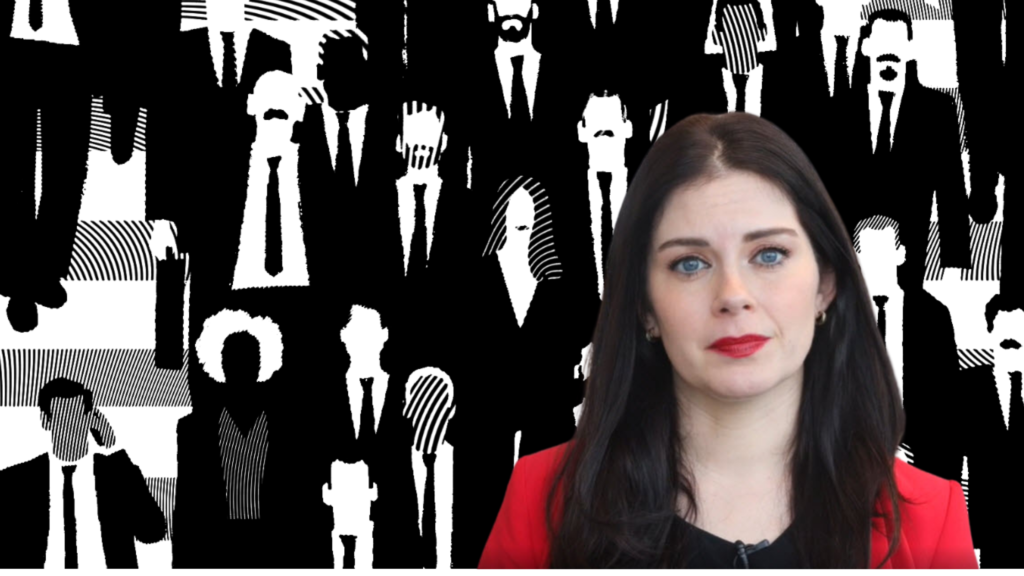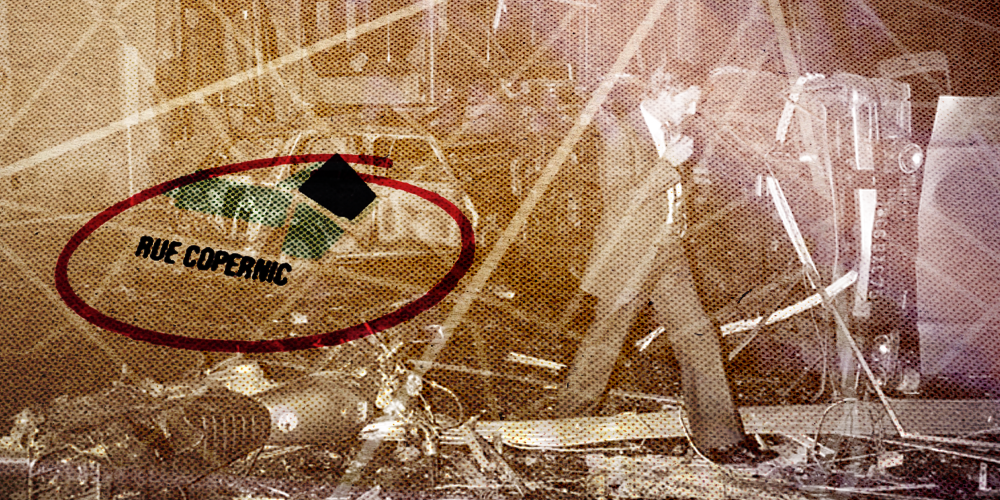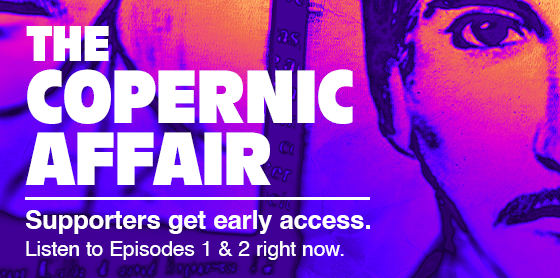

By January 4, 2021, at 11:17 am the top-100 Canadian CEOs had made, on average, as much money as the average worker will make all year. Should we be concerned that not enough of these CEOs are women?
Half the women in this country earn under $30,000 a year, and a meager five per cent of them make six figures. The “Power Gap,” a new series from The Globe and Mail, promoted as “the first of its kind and the most detailed picture available of where women stand in the Canadian workplace,” looks at the income and power disparity between this top five per cent and their male counterparts, while overlooking the reality of the vast majority of women in this country.
In most provinces, public entities are required to disclose salary information for employees earning over $100,000, and the Globe used this publicly available information for their series. Yet this sample size is too small and elite to tell a grand narrative about women at work. Data about other income brackets or trans and racialized people may be publicly unavailable, but washing one’s hands clean by adding a caveat to that effect does not justify Power Gap’s framing: that through the investigation we can learn about women in the workforce as a whole.
Some women, many of them racialized, are caring for these high-income women’s children while they’re busy breaking the glass ceiling. Income inequality has been rising in this country, and whether that wealth is held by men or women makes no difference for working women.
In its 2.5-year-long investigation, the Globe gathered salary lists from 244 public sector workplaces, paid Statistics Canada $6,000 to identify the genders most likely associated with the names, and took that information to analyze the gender breakdown in the salary and position hierarchies. The conclusion? The glass ceiling exists not only in the executive office but also in mid-management (hence a “power gap”), and women are “outnumbered, outranked, and out-earned” all the way to the top. In addition to its quantitative analysis, Power Gap includes articles discussing various gender-wage-gap issues in the public and private sectors.
By its own broad claims to demonstrate where women stand in the workforce, Power Gap is reminiscent of trickle-down feminism, the notion that if women make it to the top (and get their full share of wages), all other women will also benefit.
Trickle-down feminism doesn’t work, because social change, including labour standards, have been and will be won in the streets and not in the C-suite. Women CEOs don’t get workers parental leave, fair wages, or weekends off; feminist and labour movements do — in fact, feminist and workers’ rights groups, such as the Ontario Equal Pay Coalition, have been behind every single piece of pay equity legislation or constitutional challenge in this country. Female bosses, if the legacy of former Governor General Julie Payette is any indication, can create as hostile and toxic a workplace as any other.
Power Gap is a telling indication of the current state of popular feminism. We are exactly as enamoured with “empowerment” and representation as we were in 2013 (cue Sheryl Sandberg’s Lean In) with one caveat: today, we always make sure to add, as Christine Dobby writes in one Power Gap article, that “BIPOC women face additional barriers.” The quantitative analysis in Power Gap found that, among the top one per cent of all earners (and only those) on Canada’s sunshine lists, only three per cent were racialized women. It is not Power Gap’s fault that more race information is not available — this data is just not collected. But you don’t address race by saying you can’t address race. It isn’t enough to keep noting that BIPOC women have it worse. In our larger cultural dialogue, the effect of this is that while race is now on the agenda, nobody knows what to do with it — so it becomes a checkbox, an afterthought, a disclaimer at the end of a listicle.
The framing of diversity in one article in Power Gap, “Why don’t women advance through the corporate world like men do? Seven reasons,” is a case study in the flaws of the popular understanding of intersectionality. Reason six is: “Everything becomes harder when other measures of diversity are layered on” (reason seven is about the wage gap hurting men). As authors Robyn Doolittle and Chen Wang continue, for “Black and Latina women, the numbers are far more grim,” employees with disabilities are less likely to give a presentation at work, and “women who are perceived to belong to the LGBTQ community” don’t get hired to begin with. The authors view racialization, queerness, and disability as an otherness — these “other measures of diversity” are “layered on” to womanness, as opposed to being woven through, structurally shaping one’s experience of, say, parenthood. As Kimberlé Crenshaw, who coined the term “intersectionality,” writes, “Intersectionality is not additive. It’s fundamentally reconstitutive.” Moreover, U.S. research is cited without acknowledging the limitations of using race research from a country with a different history of race, colonialism, and migration. Not that Canada has a better track record, but the research does not reflect a one-to-one comparison.
When it comes to BIPOC women at work, there are potential issues in the Power Gap’s methodology as well. The Globe excluded “exceptionally rare” names — the gender of which could not, apparently, be determined — from its analysis. Having been addressed as “Mr. Khoroshahy” in correspondence on more than a handful of occasions, I’d have to assume that I would have been excluded from this analysis, too. Yet, addressing exclusions is the very mission of Power Gap, and it is disappointing to not even see an acknowledgement of the disproportionate racialized impact of this methodological limitation.
Admittedly, Power Gap is making available information that governments and many other employers should be releasing on their own, and for that it should be applauded. But beyond that, Power Gap’s contributions are not novel. In 2010, the Globe itself published two articles reporting on a Canadian study of over 22,000 employees at a large Canadian firm that concluded that women, both white and racialized, face a “sticky floor” in the “middle ranks of the organization.” Power Gap has only chosen a different sample size to confirm what I learnt about the mid-management bottleneck in my 200-level Sociology of Gender class in 2014. That is fine, but it is incorrect to claim that this constitutes an “unprecedented look at women in the public workforce.”
The real “gap” revealed by Power Gap is precisely the exclusions it takes for granted: that we don’t know how much the majority of women, especially racialized women, make in this country. That information is not collected, much less made public, and one of the largest newspapers in the country essentially asks racialized women to wait their turn, only vaguely promising to dig deeper into that gap, at a later time. In a world of unequal power and resources, visibility of some always comes at the cost of the invisibility of others. Establishment news media is shrinking. While there is independent media such as The Tyee or Briarpatch to turn to for sharp feminist analysis, these and similar outlets do not have the resources to fund costly multiyear investigations into gender issues.
The Power Gap series represents familiar conclusions with better data. Instead, we could have been reading multiyear investigations into labour conditions of women who are live-in caregivers or migrant sex workers. What gender wage gap is facing them? Maybe zooming in on the challenges faced by racialized and trans women in the workforce would not have produced a dazzling grand narrative, but numbers aren’t necessarily superior to magnifying individual accounts and drawing patterns among them, especially when the problem is that there are no numbers. Ironically, Power Gap itself is a symptom of the “power gap” it describes in other sectors.
Paniz is a third year student at the University of Toronto Faculty of Law, with interest in labour and employment law, discrimination law, and critical race theory. She has a BA in Women’s Studies from McGill University. She tweets @PanizKhosro


